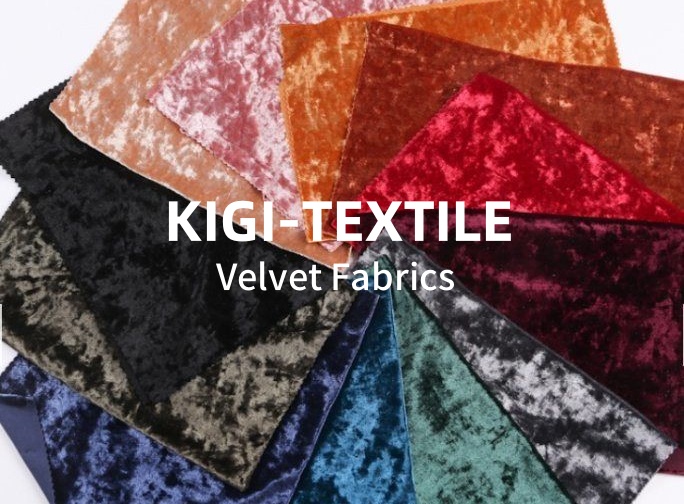- All
- Product Name
- Product Keyword
- Product Model
- Product Summary
- Product Description
- Multi Field Search
Views: 10000 Author: Site Editor Publish Time: 11-16-2024 Origin: Site








There are indeed many differences in the "velvet" in the fabric depending on the different raw materials, craftsmanship, characteristics and use. Below we analyze several common velvet fabrics in detail:
1. Flannel
-Raw material: usually made of cotton, wool or synthetic fiber (such as polyester).
-Craft: After combing and hairy treatment, it forms soft fluff on its surface. It can be single -sided or double -sided.
-Features: warm, soft, comfortable feel, usually thicker fabrics, have certain breathability.
-Factimal: widely used in autumn and winter shirts, pajamas, blankets, etc.

KIGI-TEX:High Quality Fabric Supplier From China
2. Velvet
-Raw material: Synthetic materials such as silk, nylon, polyester or cotton.
-Cafts: Through cutting or suppression of weaving technology, dense short fluff is formed on the surface.
-Feature: strong luster, rich texture, delicate feel, luxurious appearance. The texture is heavy and the warmth is good.
-Factimal: commonly used in dresses, evening clothes, home decorations (such as curtains and sofas).
3. Corduroy
-Raw material: Usually cotton, and also useful synthetic fiber.
-The crafts: Using unique weaving technology to form vertical stripes, with small fluff on the surface.
-The feature: strong abrasion resistance, soft feel, and impressive stripe design.
-Factimal: widely used for leisure pants, jackets, skirts and home supplies, such as cushions.

4. Coral Fleece
-Raw material: mainly polyester fiber.
-Craft: use double -sided fluff weaving, and the surface is treated with specific treatment to improve softness.
-Feature: extremely soft, fluffy, good thermal insulation, light weight, easy to clean.
-Factimal: commonly used in blankets, home clothing, toys and infant products.
5. Sherpa
-Raw material: It is usually made of synthetic fiber (such as polyester) to imitate the touch and appearance of lamb hair.
-Crafts: special weaving and dyeing technology are made into fabrics with high fluff.
-Feature: strong warmth, soft feel, good comfort.
-Factimal: Mostly used for winter jackets, jackets, all kinds of sweaters and home clothes.
6. Fleece
-Raw material: usually polyester fiber.
-Crafts: By pulling hair and finishing technology, the effect of fluffy hair on the surface of the fabric.
-Feature: lightweight, warm, fast dry, good breathability and durability.
-Factimal: widely used in sportswear, outdoor event clothing, sports suits and blankets.
Summarize
In general, various "velvet" fabrics are significantly different in the selection of raw materials, production technology and their characteristics and uses. What kind of velvet fabrics should be determined according to specific needs (such as comfort, warmth, use, etc.). I hope this information can help you better understand the difference between various velvet fabrics! If you have specific fabrics, you can ask me at any time!